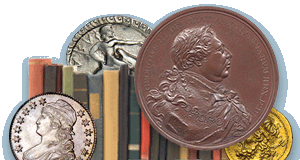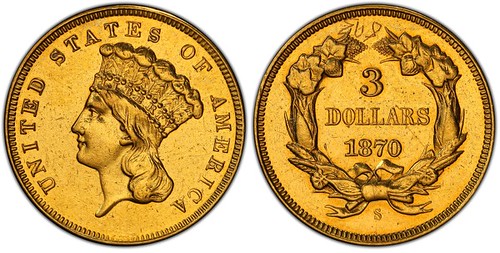
PREV ARTICLE
NEXT ARTICLE
FULL ISSUE
PREV FULL ISSUE
MORE ON SAN FRANCISCO MINT RARITIESNancy Oliver and Richard Kelly submitted these notes on some of the coins discussed in the 100 Greatest U.S. Coins book. Thanks! -Editor First the 1894 S dime. The story of SF Mint Superintendent John Daggett giving any of the 1894 S's to his daughter Hallie is a complete falsehood. We made three separate trips to Siskiyou County, California to investigate, and found that Hallie had absolutely no knowledge of this issue. Further inquiries, in various national newspapers, found that SF mint officials confirmed that in June of 1894, the mint had melted several thousands of dollars of uncurrent silver coin to make into new denominations, and at the end of the melt they had but enough left over to strike just the 24 pieces – thinking at the same time that they would strike more later in the year. The 21 pieces (3 total were sent for assay – one for the Assay Commission's yearly test, and two for a special assay) were then placed in a mint coin bag, and sent on their way – and yes, that bag may have made it to a bank in Ukiah, California. There was never any special striking ceremony for their production. Now the 1870 S Silver Dollar. SF Mint Coiner, Joseph Breck Harmstead, sent back to Philadelphia two reverse dies, for the 3 dollar gold – neither of which were sent from Philadelphia with the required mintmark S. He did not send back any silver dollar dies since they had several reverse dies (with mintmarks) available for use from previous years. Two well known silver dollar experts from the Liberty Seated Collectors Club have determined that the obverse die for this issue was actually a Carson City obverse die sent to SF – because SF never had one sent to them from Philadelphia. Thus, a SF request for one from Carson, that mint complied. Lastly, the 1870 S three dollar gold. We have researched this coin extensively as well, starting with our book on Joseph Harmstead himself, that we wrote in 2005. He, unfortunately, never notes in his records the reason for his striking of the second coin, except for the reported accompanying note with the coin (that note is missing). And yes, he did strike two pieces. In 2006 or so, we discovered a government warrant expressing exactly what coins were placed into that SF Mint cornerstone in May of 1870, and it includes a second piece. (That cornerstone's location is known to us, but we are not at liberty to divulge). In addition, we have recently theorized that Harmstead struck one of those pieces for his wife, Frances. After her death in 1886, Harmstead gave it to his stepdaughter. Harmstead died in 1889, and his stepdaughter died in 1901. The husband of his stepdaughter then took possession of the coin, with the accompanying note, and gave it eventually to his son (his only child) who was a teacher in New York City. This son sold it to Henry VanCamp, and well you know the rest." Thank you! See also an article elsewhere in this issue about the 1844-O $5 and $10 Proof Gold Coins. -Editor
To read the earlier E-Sylum article, see:
Wayne Homren, Editor The Numismatic Bibliomania Society is a non-profit organization promoting numismatic literature. See our web site at coinbooks.org. To submit items for publication in The E-Sylum, write to the Editor at this address: whomren@gmail.com To subscribe go to: Subscribe All Rights Reserved. NBS Home Page Contact the NBS webmaster 
|




